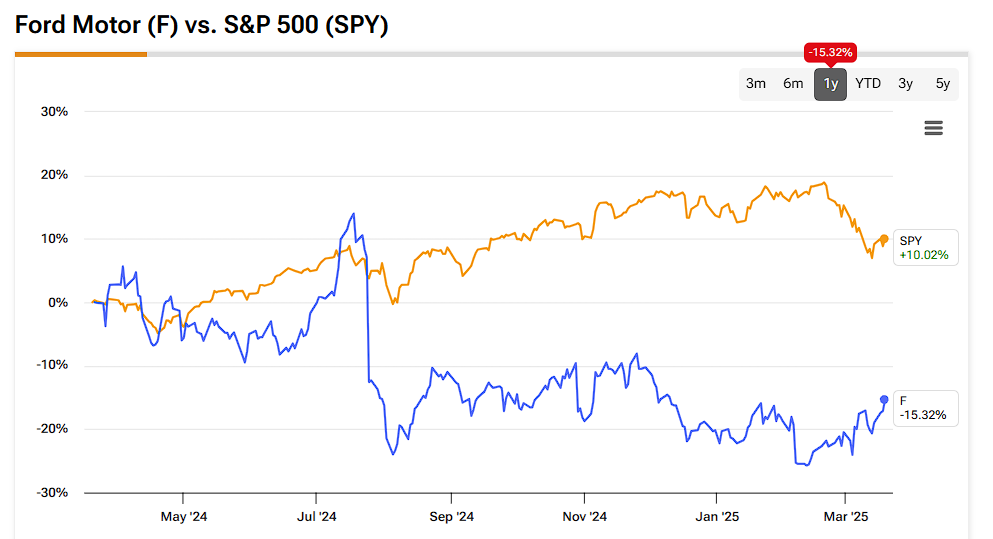Ford Motor’s shares have experienced a significant decline of 15.3% over the last year, underperforming the S&P 500 Index, which has risen by 10% during the same timeframe. Amid this downturn, the automaker has been grappling with several hurdles, including rising inflation that has dampened consumer confidence and cautious spending on large purchases like cars. Despite these challenges, I maintain a positive outlook on Ford stock and believe it presents more investment opportunities at its lower price point.
Additionally, there is considerable uncertainty regarding the potential elimination of tax credits for electric vehicles under the Trump administration, along with ongoing tariff concerns affecting imports from Mexico and Canada, where many auto parts are sourced. Recently, President Trump extended a temporary reprieve from proposed tariffs to Ford and other major automakers. However, the future remains unpredictable, and Ford’s CEO, Jim Farley, has warned that persistent tariffs could lead to substantial losses for the U.S. car industry.
These challenges have resulted in Ford issuing a conservative adjusted EBIT guidance of $7 billion to $8.5 billion for 2025, considerably lower than the $10.4 billion reported for 2024—a development that disappointed market analysts.
While Ford is facing significant headwinds, the adage of buying during market downturns fits the current situation perfectly. Even with the stock’s recent struggles, my confidence in Ford is bolstered by its attractive dividend yield, the likelihood of special dividends, and its remarkably low valuation.
Although Ford’s shares are down, they offer substantial value for investors. Projections suggest earnings of $1.37 per share in 2025, resulting in a forward valuation of only 7.2 times the consensus earnings estimates for that year. In comparison, the S&P 500 continues to trade at approximately 20 times its forward earnings. Ford appears even more appealing for 2026, with an expected earnings per share of $1.65, equating to just six times that year’s estimates.
On a price-to-sales basis, Ford is also strikingly inexpensive, trading at 0.2 times the consensus sales estimates for 2025. Unlike many stocks that experience declining revenues, Ford has reported record sales of $185 billion for 2024, marking four consecutive years of revenue growth—an impressive feat for a company that has been in operation for 121 years.
Despite the various challenges Ford faces today, its stock seems to reflect these concerns in its price. The shares also offer an attractive dividend opportunity, with a dividend yield of 7.54%, significantly higher than the S&P 500’s yield of 1.3% and exceeding the 4.3% yield on 10-year treasuries. While the regular dividend has not seen much growth, Ford has been consistent in offering special dividends—most recently, a special dividend of $0.15 for 2025 and previous ones of $0.18 and $0.65 in 2024 and 2025, respectively.
As for market sentiment, Ford holds a consensus rating of “Hold,” with a mix of four Buy ratings, nine Holds, and two Sell ratings from analysts. The average price target for Ford suggests a potential upside of 5.3% from its current value. Although the road has been rocky for Ford and its shareholders, with high inflation, rising interest rates, and tariff complications, it seems these issues are factored into the stock’s current valuation. Investors willing to be patient may find value in Ford’s stock while capitalizing on its attractive dividend yield and potential for additional special dividends. While it may not suit conservative investors, I remain positive about Ford Motor Co.



